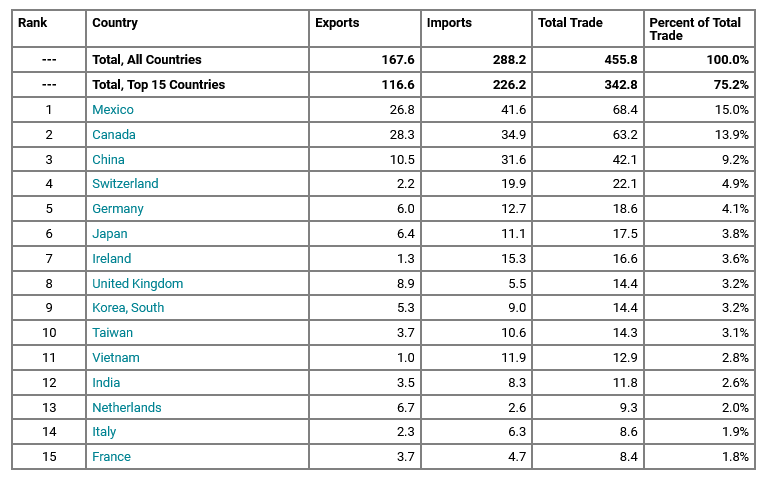Exploring The Impacts Of Tariffs ... Especially In The Case Of Mexico & Canada
Reyes | CLMI
A full scale global trade war appears to be in full effect.
The 10 percent across-the-board tariffs that President Trump has imposed on countries feeding imports into the United States has roiled policymakers, world leaders and markets. At first, it was the 25 percent tariffs on all steel and aluminum exports on Mexico and Canada, among other key products.
But that seemed like a kickoff experiment or test in relation to what’s currently being seen. It raised questions about how long this will go on, and how far are countries willing to go in their response with retaliatory tariffs that have already been put into play. Diplomatic negotiations and counter tariffs are ongoing, along with the administration’s stand that it will continue with tariffs indefinitely. Other questions arise as to how much this will impact everything from a country’s ability to absorb what could soon turn into existential economic blows to what that may mean for its sovereignty. These questions become even more pressing, with the clock ticking, for poorer countries on the African continent which find themselves hit the most with tariff decisions, as BBC reports …
For larger countries in firmer economic standing and the ability to counter, President Trump seemed to present a diplomatic carrot of sorts if other nations were willing to discuss growing trade deficits, even while stating that he wasn’t putting any pause on tariffs, as NBC News reports …
“We’re not looking at that,” Trump said Monday when asked if he was thinking about taking more time to enact his sweeping tariffs. Instead, the president said countries could work to restore balance in trade relations with the U.S. through other actions.
"We have many, many countries that are coming to negotiate deals with us," Trump said. "They’re going to be fair deals, and in certain cases, they’re going to be paying substantial tariffs."
For some, those discussions are already underway, with the president touting a “very good” conversation with Japan on Monday, and saying that he expects that his administration will soon be speaking with China, among other nations. Tariffs on China are expected to rise to 104 percent on Wednesday (April 9th).
In the case of Mexico and Canada - the top two trading partners of the United States - among the main reasons behind tariffs, according to the administration, was to hold Mexico and Canada responsible for stopping illegal immigration. When it seemed like these promises were not being kept, President Trump introduced the 25 percent tariffs - which also served as a kind of warning to other countries in the top 15 trading list and beyond ...
Before the tariffs went into effect back then, Mexico attempted to offer a diplomatic solution by releasing 29 high level drug cartel members. That actually didn’t help. Now that the tariffs are in effect, Mexico imposed its own 25 percent tariffs on US goods.
Before the tariffs were in place Canada also tried to negotiate with the US - yet when that didn’t not work out, retaliatory tariffs went into place. For example, Canada imposed their own 25 percent tariffs on steel products from As part of another response Canada filed a complaint against the US to the World Trade Organization as a means of challenging American tariffs. China also did the same.
The retaliatory tariffs made by Mexico and Canada are among the most prominent cases given their geographic proximity as bordering neighbors and their longstanding geopolitical friends. Now, as the top two trading partners, they find themselves in a trade war where they’ll have to show the U.S. that they won’t take the tariffs lightly. Tariffs on their own will make products cost the American consumer more. The tariffs set in place by Mexico and Canada will make U.S. products in those countries more expensive, which makes consumers in those countries turn their nose due to rising prices for American goods. For Canada this decision is to defend its sovereign interests and its consumers (especially since President Trump never ruled out a future attempt by the U.S. to annex Canada). Mexico still hopes a negotiating table is possible, but has shown that they will continue their own tariffs. Still, both countries are part of the U.S.-Mexico-Canada Agreement, so there are exemptions, as the Wall Street Journal points out …
Meanwhile, the administration pushes ahead with reciprocal tariffs …
AARON REYES is a Fellow at the Civic Literacy & Media Influence Institute at Learn4Life




